 Search by Keyword
|
“DRIVE MY CAR”
(John Lennon – Paul McCartney)
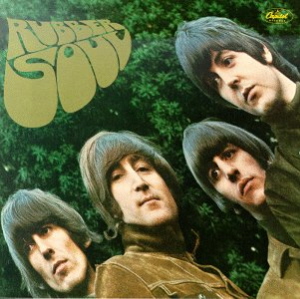 “After midnight, we’re gonna let it all hang down.” So said Eric Clapton in his classic top 20 smash of late 1970. About five years earlier, his fellow British friends The Beatles did just that for the first time. October 13th, 1965 was the very first time that one of their scheduled recording sessions went past the midnight mark and into the next day. Although this became more commonplace even by the end of that year (in order to squeeze out the remaining tracks for their “Rubber Soul” album before the year-end deadline), it ended up pretty much being the rule as early as the next year, 25 out of the 33 recording sessions for “Revolver” going past the 12 pm mark. “After midnight, we’re gonna let it all hang down.” So said Eric Clapton in his classic top 20 smash of late 1970. About five years earlier, his fellow British friends The Beatles did just that for the first time. October 13th, 1965 was the very first time that one of their scheduled recording sessions went past the midnight mark and into the next day. Although this became more commonplace even by the end of that year (in order to squeeze out the remaining tracks for their “Rubber Soul” album before the year-end deadline), it ended up pretty much being the rule as early as the next year, 25 out of the 33 recording sessions for “Revolver” going past the 12 pm mark.
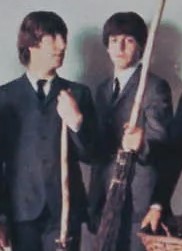 The first song that the group “let it all hang down” on was the Lennon / McCartney collaboration “Drive My Car.” With much rehearsal time needed, laying down the rhythm track and adding extensive overdubs, they decided to stick it out until the song was complete before they left for the evening. Their decision to stay and finish the recording while the inspiration was high turned out to be a wise one, being that the enduring quality of the song resonates to this day. The first song that the group “let it all hang down” on was the Lennon / McCartney collaboration “Drive My Car.” With much rehearsal time needed, laying down the rhythm track and adding extensive overdubs, they decided to stick it out until the song was complete before they left for the evening. Their decision to stay and finish the recording while the inspiration was high turned out to be a wise one, being that the enduring quality of the song resonates to this day.
Songwriting History
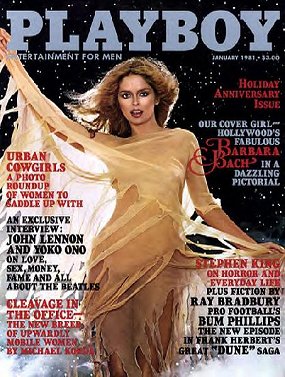 Although John described the song as co-written by him and Paul during his Hit Parader interview in 1972, during his 1980 Playboy interview, he pretty much gave Paul full credit. When asked about “Drive My Car,” he then stated: “Paul’s song. It has a Motown bass line. He got this ‘drive my car’ thing and the ‘beep beep beep’ in the studio. I think we just threw it in.” Although John described the song as co-written by him and Paul during his Hit Parader interview in 1972, during his 1980 Playboy interview, he pretty much gave Paul full credit. When asked about “Drive My Car,” he then stated: “Paul’s song. It has a Motown bass line. He got this ‘drive my car’ thing and the ‘beep beep beep’ in the studio. I think we just threw it in.”
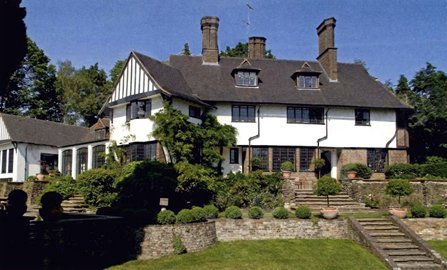 McCartney elaborated about the song many times throughout the years, shedding much light on its conception. "Drive My Car" was written at John’s Kenwood home probably sometime in September or early October 1965 during one of their many writing sessions. Paul apparently had the melody already in mind as he showed up at John’s place "with a fairly good tune, but it had crappy lyrics, like ‘I can give you diamond rings, I can give you golden rings, I can give you anything,’ and John said, ‘Oh!’ he didn’t like them and we had a deep sad moment." McCartney elaborated about the song many times throughout the years, shedding much light on its conception. "Drive My Car" was written at John’s Kenwood home probably sometime in September or early October 1965 during one of their many writing sessions. Paul apparently had the melody already in mind as he showed up at John’s place "with a fairly good tune, but it had crappy lyrics, like ‘I can give you diamond rings, I can give you golden rings, I can give you anything,’ and John said, ‘Oh!’ he didn’t like them and we had a deep sad moment."
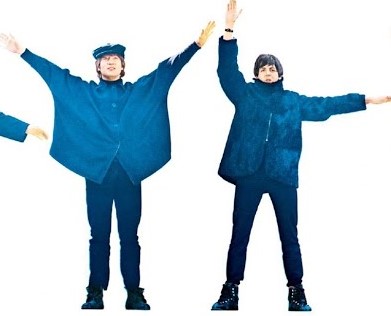 As detailed above, the original preliminary lyrics included what ultimately became the first verse of the finished song but with the following chorus: "You can buy me golden rings / get me all the kind of thing / oo, if (you) can buy me rings / then baby I'll love you." "The nearest John and I ever got to a dry session," Paul explained in his 2021 book "The Lyrics," "was with a song called 'Golden Rings.' I'd brought a version of it out to John's house in Weybridge, and we stalled when we got to the lines 'You can buy me golden rings / Get me all that kind of thing.' We kept singing that over and over and couldn't get beyond it because it was so shockingly bad." As detailed above, the original preliminary lyrics included what ultimately became the first verse of the finished song but with the following chorus: "You can buy me golden rings / get me all the kind of thing / oo, if (you) can buy me rings / then baby I'll love you." "The nearest John and I ever got to a dry session," Paul explained in his 2021 book "The Lyrics," "was with a song called 'Golden Rings.' I'd brought a version of it out to John's house in Weybridge, and we stalled when we got to the lines 'You can buy me golden rings / Get me all that kind of thing.' We kept singing that over and over and couldn't get beyond it because it was so shockingly bad."
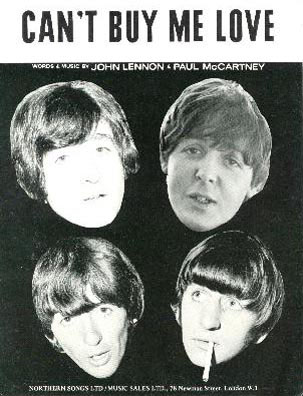 Paul explains further in the book "Many Years From Now": “The lyrics were disastrous and I knew it. Often you just block songs out and words just come into your mind and when they do it’s hard to get rid of them. You often quote other songs too and you know you’ve got to get rid of them, but sometimes it’s very difficult to find a more suitable phrase than the one that has insinuated itself into your consciousness.” In his 2021 book "The Lyrics," he adds: "Part of the problem was that we'd already had 'a diamond ring' in 'Can't Buy Me Love.' 'Golden rings' was unoriginal and uninspiring. We couldn't get past it." Another Beatles song from the previous year, “I Feel Fine,” also included lines about buying a “diamond ring” for someone. Paul explains further in the book "Many Years From Now": “The lyrics were disastrous and I knew it. Often you just block songs out and words just come into your mind and when they do it’s hard to get rid of them. You often quote other songs too and you know you’ve got to get rid of them, but sometimes it’s very difficult to find a more suitable phrase than the one that has insinuated itself into your consciousness.” In his 2021 book "The Lyrics," he adds: "Part of the problem was that we'd already had 'a diamond ring' in 'Can't Buy Me Love.' 'Golden rings' was unoriginal and uninspiring. We couldn't get past it." Another Beatles song from the previous year, “I Feel Fine,” also included lines about buying a “diamond ring” for someone.
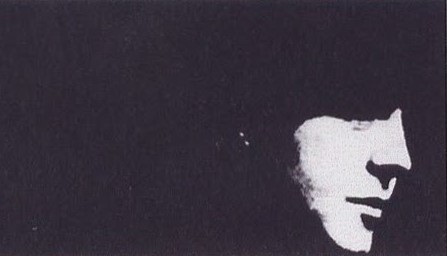 “This is one of the songs where John and I came nearest to having a dry session,” Paul continues. “’Rings’ is fatal anyway, ‘rings’ always rhymes with ‘things’ and I knew it was a bad idea. I came in and I said, ‘These aren’t good lyrics but it’s a good tune.’ The tune was nice, the tune was there, I’d done the melody. Well, we tried, and John couldn’t think of anything, and we tried and eventually it was, ‘Oh let’s leave it, let’s get off this one,’ ‘No, no. We can do it, we can do it.’” “This is one of the songs where John and I came nearest to having a dry session,” Paul continues. “’Rings’ is fatal anyway, ‘rings’ always rhymes with ‘things’ and I knew it was a bad idea. I came in and I said, ‘These aren’t good lyrics but it’s a good tune.’ The tune was nice, the tune was there, I’d done the melody. Well, we tried, and John couldn’t think of anything, and we tried and eventually it was, ‘Oh let’s leave it, let’s get off this one,’ ‘No, no. We can do it, we can do it.’”
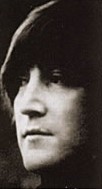 Since the inspiration just wasn’t there, Paul came up with a plan. "So, I said to him, ‘I’ll tell you what, let’s have a cup of tea and a ciggie and we’ll just relax for a minute.’…and suddenly it came: ‘Wait a minute: “Drive My Car!”’ Then we got into the fun of that scenario: ‘Oh, you can drive my car.’ What is it? What’s he doing? Is he offering a job as a chauffeur, or what? And then it became much more ambiguous, which we liked, instead of golden rings, which was a bit poofy. ‘Golden rings’ became ‘beep beep, yeah.’ We both came up with that. Suddenly we were in LA: cars, chauffeurs, open-top Cadillacs, and it was a whole other thing." Since the inspiration just wasn’t there, Paul came up with a plan. "So, I said to him, ‘I’ll tell you what, let’s have a cup of tea and a ciggie and we’ll just relax for a minute.’…and suddenly it came: ‘Wait a minute: “Drive My Car!”’ Then we got into the fun of that scenario: ‘Oh, you can drive my car.’ What is it? What’s he doing? Is he offering a job as a chauffeur, or what? And then it became much more ambiguous, which we liked, instead of golden rings, which was a bit poofy. ‘Golden rings’ became ‘beep beep, yeah.’ We both came up with that. Suddenly we were in LA: cars, chauffeurs, open-top Cadillacs, and it was a whole other thing."
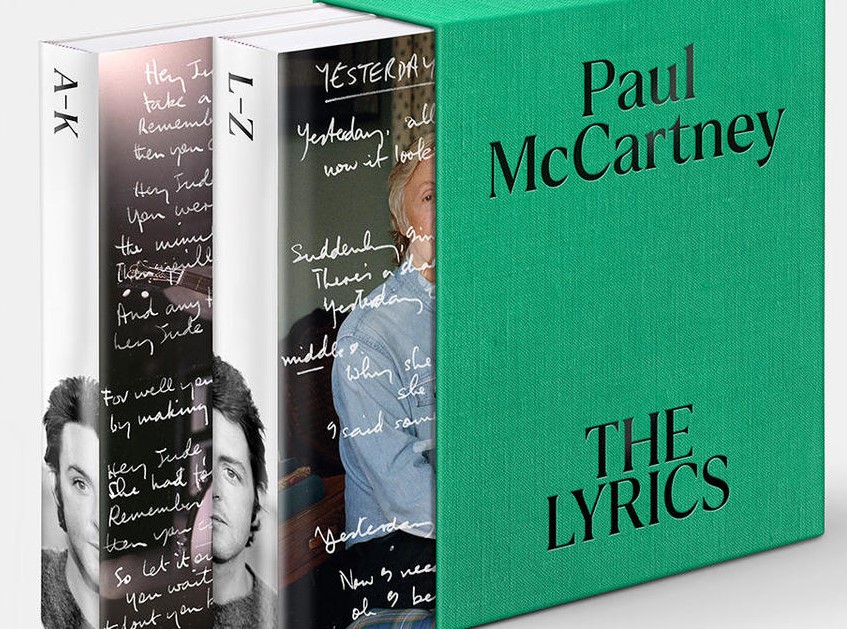 In his book "The Lyrics," Paul elaborates further. "When we came back, we started thinking of the woman as an LA girl. That improved things a bit. Then she wanted a chauffeur...Once you get into creating a narrative and storytelling, it's so much more entertaining. It draws you forward so much more easily. Now we were dramatizing the interviewing of a chauffeur; we got over that dry moment and finished the song. It became one that didn't get away. And its success had to do with getting rid of 'golden rings' and heading to 'Baby, you can drive my car.'" Another change in the lyrics was the phrase "and maybe I'll love you," the LA woman holding out a carrot to the man instead of an all-out promise of sexual gratification. In his book "The Lyrics," Paul elaborates further. "When we came back, we started thinking of the woman as an LA girl. That improved things a bit. Then she wanted a chauffeur...Once you get into creating a narrative and storytelling, it's so much more entertaining. It draws you forward so much more easily. Now we were dramatizing the interviewing of a chauffeur; we got over that dry moment and finished the song. It became one that didn't get away. And its success had to do with getting rid of 'golden rings' and heading to 'Baby, you can drive my car.'" Another change in the lyrics was the phrase "and maybe I'll love you," the LA woman holding out a carrot to the man instead of an all-out promise of sexual gratification.
P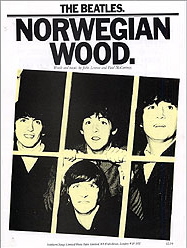 aul also reveals in the book "Many Years From Now" that chauffeurs weren’t the only thing that was meant by these lyrics. "It was wonderful because this nice tongue-in-cheek idea came and suddenly there was a girl there, the heroine of the story, and the story developed and had a little sting in the tail like ‘Norwegian Wood’ had, which was ‘I actually haven’t got a car, but when I get one you’ll be a terrific chauffeur.’ So to me it was LA chicks…and it also meant ‘you can be my lover.’ ‘Drive my car’ was an old blues euphemism for sex, so in the end all is revealed. Black humor crept in and saved the day. It wrote itself then. I find that very often, once you get the good idea, things write themselves." aul also reveals in the book "Many Years From Now" that chauffeurs weren’t the only thing that was meant by these lyrics. "It was wonderful because this nice tongue-in-cheek idea came and suddenly there was a girl there, the heroine of the story, and the story developed and had a little sting in the tail like ‘Norwegian Wood’ had, which was ‘I actually haven’t got a car, but when I get one you’ll be a terrific chauffeur.’ So to me it was LA chicks…and it also meant ‘you can be my lover.’ ‘Drive my car’ was an old blues euphemism for sex, so in the end all is revealed. Black humor crept in and saved the day. It wrote itself then. I find that very often, once you get the good idea, things write themselves."
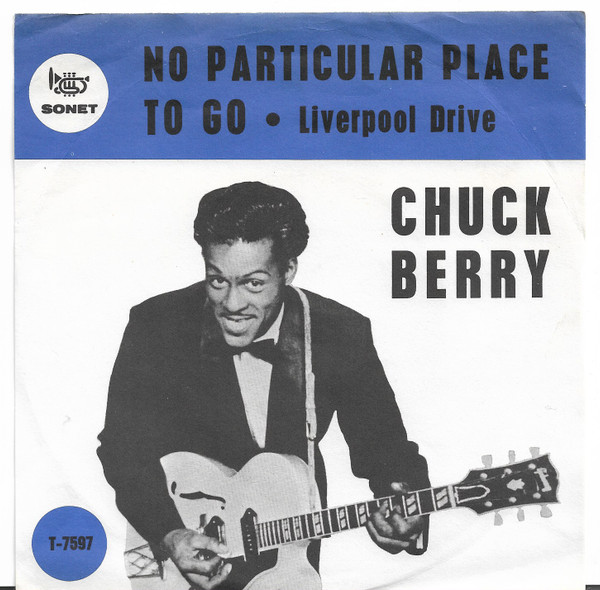 McCartney elaborates further in his book "The Lyrics": "I know there's a theory that rock and roll couldn't have existed without the guitars of Leo Fender, but it probably couldn't have existed without Henry Ford either. I'm thinking of the relationship between the motorcar and what happens in the back seat. We know that people shagged before the motorcar, but the motorcar gave the erotic a whole new lease on life. Think of Chuck Berry 'riding along in my automobile.'" McCartney elaborates further in his book "The Lyrics": "I know there's a theory that rock and roll couldn't have existed without the guitars of Leo Fender, but it probably couldn't have existed without Henry Ford either. I'm thinking of the relationship between the motorcar and what happens in the back seat. We know that people shagged before the motorcar, but the motorcar gave the erotic a whole new lease on life. Think of Chuck Berry 'riding along in my automobile.'"
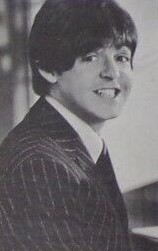 The element of humor was something that McCartney was especially proud of. In fact, two days after the song was completed in the studio, he was obviously referring to “Drive My Car” when he told a British music magazine, "We’ve written some funny songs – songs with jokes in. We think that comedy numbers are the next thing after protest songs." The element of humor was something that McCartney was especially proud of. In fact, two days after the song was completed in the studio, he was obviously referring to “Drive My Car” when he told a British music magazine, "We’ve written some funny songs – songs with jokes in. We think that comedy numbers are the next thing after protest songs."
As to the melodic structure of the song, Paul explains in "The Lyrics": "Then there's staying with just two chords for the whole verse. Sometimes you don't even need two; one would do...(this) is true of the verses of 'Drive My Car.' Two chords are more than enough - maybe even one more than enough."
As can be surmised from John’s comments about the song, Paul winds up being the dominant writer on this one. As Paul himself concurs: “So that was my idea and John and I wrote the words, so I’d go 70-30 on that to me.”
Recording History
 October 13th, 1965, which was the second recording session for what became their “Rubber Soul” album, was a five hour and fifteen minute session that was devoted entirely to recording their newly written composition “Drive My Car.” The Beatles entered EMI Studio Two at 7 pm and started working out the arrangement. October 13th, 1965, which was the second recording session for what became their “Rubber Soul” album, was a five hour and fifteen minute session that was devoted entirely to recording their newly written composition “Drive My Car.” The Beatles entered EMI Studio Two at 7 pm and started working out the arrangement.
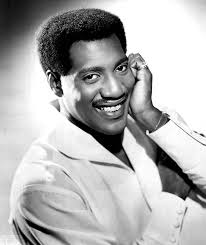 George explained the somewhat different atmosphere of this recording session: “We laid the track because, what Paul would (usually) do if he had written a song, he’d learn all the parts for himself and then come in the studio and say, ‘Do this.’ He’d never give you the opportunity to come out with something. But, on ‘Drive My Car,’ I just played the line, which is really like a lick off ‘Respect,’ you know, the Otis Redding version. I played that line on the guitar and Paul laid that with me on bass. We laid the track down like that.” George explained the somewhat different atmosphere of this recording session: “We laid the track because, what Paul would (usually) do if he had written a song, he’d learn all the parts for himself and then come in the studio and say, ‘Do this.’ He’d never give you the opportunity to come out with something. But, on ‘Drive My Car,’ I just played the line, which is really like a lick off ‘Respect,’ you know, the Otis Redding version. I played that line on the guitar and Paul laid that with me on bass. We laid the track down like that.”
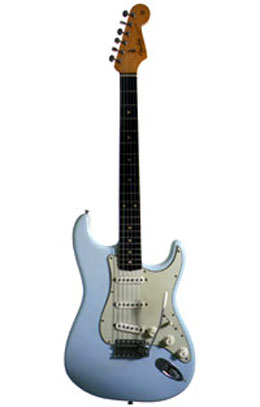 What causes a bit of confusion here is that George was quoted at one point explaining “I played the bassline on ‘Drive My Car.’ It was like the line from ‘Respect’ by Otis Redding.” Many authors take this as evidence that George actually played the bass guitar on the recording. His quote from the previous paragraph clears this up, him playing the “bassline” meaning that he played the same part that Paul played on bass during the rhythm track. At another time, George had stated: “I used a (Fender) Stratocaster around ‘Rubber Soul’ time, on ‘Drive My Car’ and those kind of things.” What causes a bit of confusion here is that George was quoted at one point explaining “I played the bassline on ‘Drive My Car.’ It was like the line from ‘Respect’ by Otis Redding.” Many authors take this as evidence that George actually played the bass guitar on the recording. His quote from the previous paragraph clears this up, him playing the “bassline” meaning that he played the same part that Paul played on bass during the rhythm track. At another time, George had stated: “I used a (Fender) Stratocaster around ‘Rubber Soul’ time, on ‘Drive My Car’ and those kind of things.”
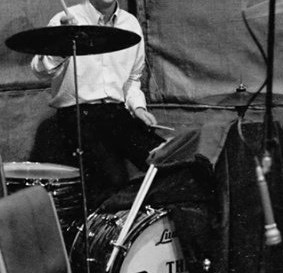 After they got the arrangement perfected, four takes of the rhythm track were attempted before they got it right, "take four" being the only one that made it all the way through to the end of the song. The instruments used on the rhythm track consisted of George on electric guitar, McCartney on bass (both basically playing the same part) and Ringo on drums. John apparently sat out this rhythm track as well as the remainder of the entire song. His only contributions to “Drive My Car” were his lead and background vocals which were overdubbed later. After they got the arrangement perfected, four takes of the rhythm track were attempted before they got it right, "take four" being the only one that made it all the way through to the end of the song. The instruments used on the rhythm track consisted of George on electric guitar, McCartney on bass (both basically playing the same part) and Ringo on drums. John apparently sat out this rhythm track as well as the remainder of the entire song. His only contributions to “Drive My Car” were his lead and background vocals which were overdubbed later.
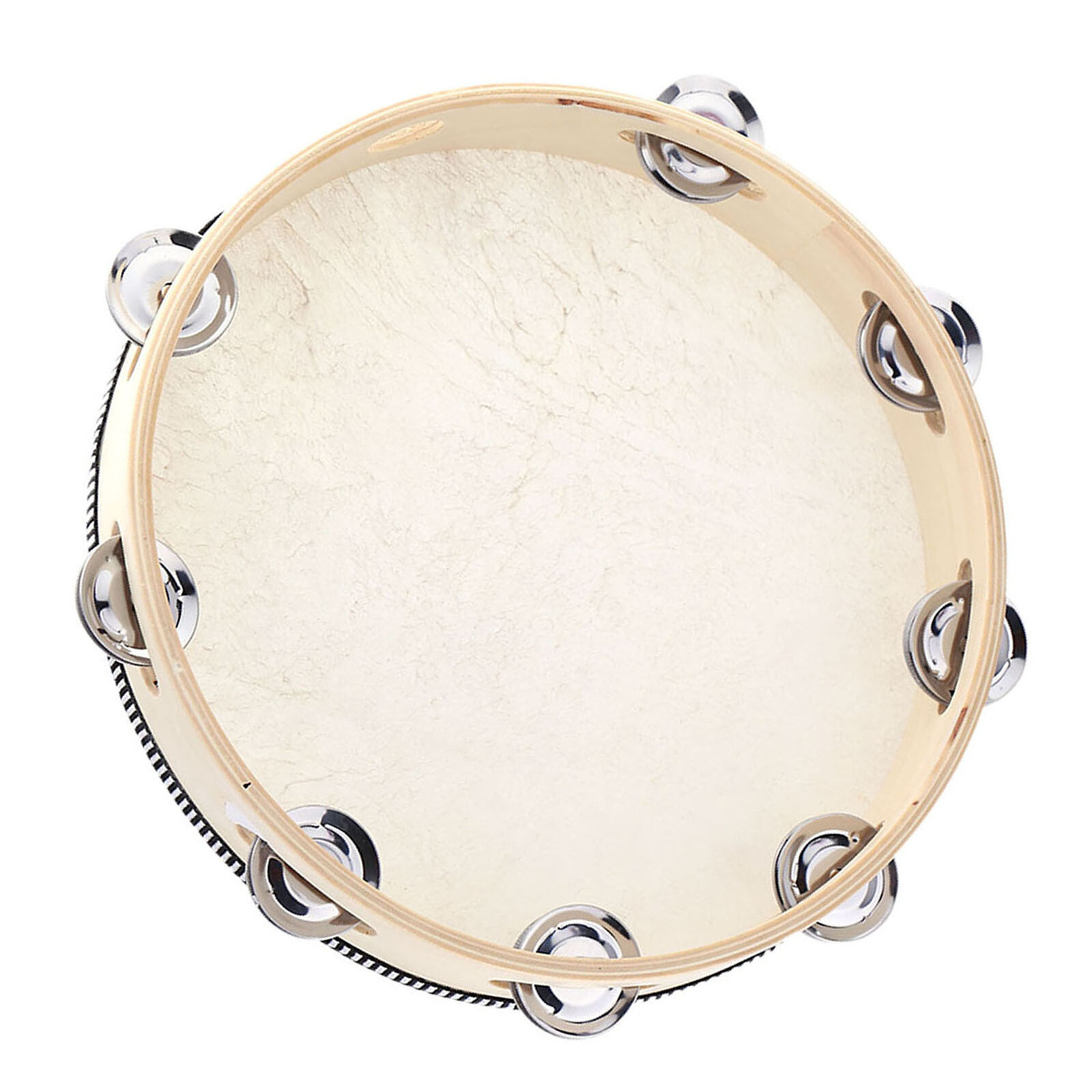 These overdubs were many and include the following: two tambourines from Ringo (one playing accents as heard in the verses and the second playing a rhythm pattern as heard in the choruses), a lead vocal track from John and Paul simultaneously, Paul on piano during the choruses, Ringo on cowbell throughout most of the song, three part harmonies from John, Paul and George during the “beep, beep” portions of the song, and Paul on lead guitar during the intro and using a slide during the solo section. Regarding the 'beep, beep' harmonies, Paul explains in his book "The Lyrics," "We did it in close harmony so it would sound a bit like a horn." These overdubs were many and include the following: two tambourines from Ringo (one playing accents as heard in the verses and the second playing a rhythm pattern as heard in the choruses), a lead vocal track from John and Paul simultaneously, Paul on piano during the choruses, Ringo on cowbell throughout most of the song, three part harmonies from John, Paul and George during the “beep, beep” portions of the song, and Paul on lead guitar during the intro and using a slide during the solo section. Regarding the 'beep, beep' harmonies, Paul explains in his book "The Lyrics," "We did it in close harmony so it would sound a bit like a horn."
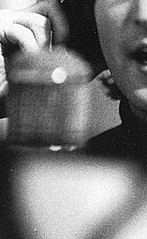 At least two attempts at the lead guitar solo were made since a different take of this solo can faintly be heard in the background in all of the mixes that were released. This is most discernible in the final two measures of the solo where Paul's slide work is noticeably different. Also noticeable are John’s overdubbed “and maybe I'll love you” lines at the end of each chorus, which were probably done during the three-part harmony overdub. By 12:15 am the next day the song was complete and they all went home for some sleep (or to party somewhere). At least two attempts at the lead guitar solo were made since a different take of this solo can faintly be heard in the background in all of the mixes that were released. This is most discernible in the final two measures of the solo where Paul's slide work is noticeably different. Also noticeable are John’s overdubbed “and maybe I'll love you” lines at the end of each chorus, which were probably done during the three-part harmony overdub. By 12:15 am the next day the song was complete and they all went home for some sleep (or to party somewhere).
 The mono mix was made on October 25th, 1965 in the control room of EMI Studio Two by producer George Martin and engineers Norman Smith and Ken Scott. The cowbell overdub was mixed rather low on this mono mix which also included very little reverb on the vocals. Interestingly, this mix was not available in the US at the time since Capitol Records decided to combine both channels of the stereo mix to create their own mono mix. The mono mix was made on October 25th, 1965 in the control room of EMI Studio Two by producer George Martin and engineers Norman Smith and Ken Scott. The cowbell overdub was mixed rather low on this mono mix which also included very little reverb on the vocals. Interestingly, this mix was not available in the US at the time since Capitol Records decided to combine both channels of the stereo mix to create their own mono mix.
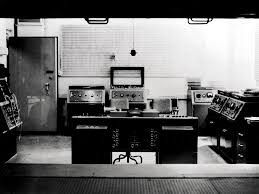 While the band was at Buckingham Palace receiving their MBE’s on October 26th, 1965, the stereo mix of “Drive My Car” was being created in the EMI Studio Two control room. The same EMI staff was utilized for this session with the exception of Ron Pender substituting for Ken Scott as 2nd engineer. While the band was at Buckingham Palace receiving their MBE’s on October 26th, 1965, the stereo mix of “Drive My Car” was being created in the EMI Studio Two control room. The same EMI staff was utilized for this session with the exception of Ron Pender substituting for Ken Scott as 2nd engineer.
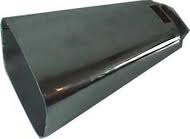 The cowbell was raised slightly higher in the mix and the reverb is punched up somewhat unlike the mono mix made the day before. The rhythm track is heard almost exclusively in the left channel along with both tambourine performances and the three-part “beep, beep” harmony overdub (along with John’s “maybe I'll love you” lines). The right channel consists of the rest of the overdubs, which include the lead vocals, cowbell, piano and lead guitar parts. In fact, we can hear George play some adlib guitar runs in between the vocal lines in the final verse, but these were turned down in the mix and not meant to be heard (although we still can). Another anomaly is Paul practicing the vocal line “Baby, you can drive my car” in the final measures of the guitar solo, although this is quite hard to hear since it also wasn’t meant to be heard. The cowbell was raised slightly higher in the mix and the reverb is punched up somewhat unlike the mono mix made the day before. The rhythm track is heard almost exclusively in the left channel along with both tambourine performances and the three-part “beep, beep” harmony overdub (along with John’s “maybe I'll love you” lines). The right channel consists of the rest of the overdubs, which include the lead vocals, cowbell, piano and lead guitar parts. In fact, we can hear George play some adlib guitar runs in between the vocal lines in the final verse, but these were turned down in the mix and not meant to be heard (although we still can). Another anomaly is Paul practicing the vocal line “Baby, you can drive my car” in the final measures of the guitar solo, although this is quite hard to hear since it also wasn’t meant to be heard.
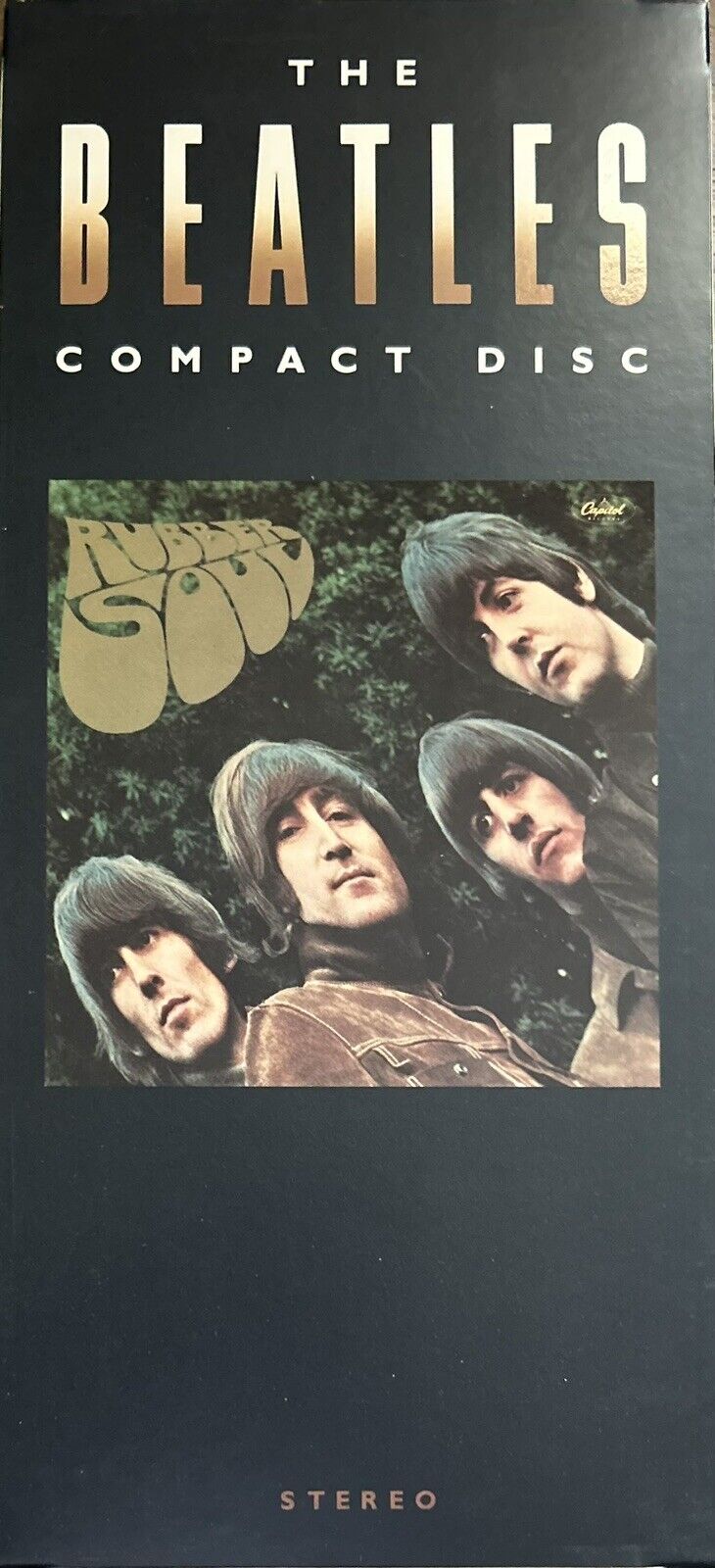 Sometime in 1986, George Martin returned to the master tapes to make a new stereo mix of the song for the compact disc release of “Rubber Soul” in 1987. Although the changes to the elements are minimal, differences include the lead vocals being a little more centered and the absence of Paul practicing his vocals during the guitar solo. Sometime in 1986, George Martin returned to the master tapes to make a new stereo mix of the song for the compact disc release of “Rubber Soul” in 1987. Although the changes to the elements are minimal, differences include the lead vocals being a little more centered and the absence of Paul practicing his vocals during the guitar solo.
 Giles Martin was given the task in 2023 of creating a "demix remix" of "Drive My Car" for inclusion on the 50th Anniversary edition of the compilation album "The Beatles / 1962 - 1966" ("The Red Album"). With Peter Jackson's AI technology at his disposal, Giles Martin was able to utilize this "new machine-learning techology" so that "individual elements that were put to tape...and were impossible to separate" could be "untangled, allowing Giles (Martin) to put the original recordings back together with even greater clarity and impact," as stated by John Harris in the liner notes of the above mentioned album. What makes this such an appealing stereo version is the nice balance between all of the instruments, the more palatable subdued volume of the cowbell, and the stereo mix of Ringo's drums. Giles Martin was given the task in 2023 of creating a "demix remix" of "Drive My Car" for inclusion on the 50th Anniversary edition of the compilation album "The Beatles / 1962 - 1966" ("The Red Album"). With Peter Jackson's AI technology at his disposal, Giles Martin was able to utilize this "new machine-learning techology" so that "individual elements that were put to tape...and were impossible to separate" could be "untangled, allowing Giles (Martin) to put the original recordings back together with even greater clarity and impact," as stated by John Harris in the liner notes of the above mentioned album. What makes this such an appealing stereo version is the nice balance between all of the instruments, the more palatable subdued volume of the cowbell, and the stereo mix of Ringo's drums.
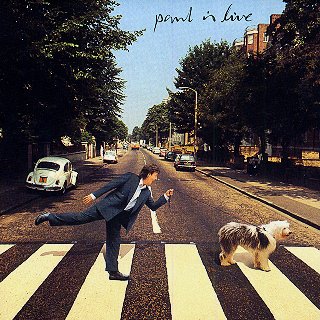 Not to be forgotten are the live recordings of “Drive My Car” that have been released by Paul, the first being heard on his album “Paul Is Live” which was recorded sometime between March 22nd and June 15th of 1993. His performance of the song at the 2005 Super Bowl on February 6th, 2005 was also recorded for a future limited edition release. A June 27th, 2007 recording of the song at Amoeba Music in Hollywood, California saw release in Britain and Ireland on an album entitled "Paul McCartney Live In Los Angeles" and then on the US released album "Amoeba Gig." The song was also recorded between July 15th and 21st, 2009 at Citi Field in New York City, the results of which appear as the opening track of his “Good Evening New York City” album. Not to be forgotten are the live recordings of “Drive My Car” that have been released by Paul, the first being heard on his album “Paul Is Live” which was recorded sometime between March 22nd and June 15th of 1993. His performance of the song at the 2005 Super Bowl on February 6th, 2005 was also recorded for a future limited edition release. A June 27th, 2007 recording of the song at Amoeba Music in Hollywood, California saw release in Britain and Ireland on an album entitled "Paul McCartney Live In Los Angeles" and then on the US released album "Amoeba Gig." The song was also recorded between July 15th and 21st, 2009 at Citi Field in New York City, the results of which appear as the opening track of his “Good Evening New York City” album.
Song Structure and Style
While a George Harrison-suggested R&B arrangement was implemented as the rhythmic style of the song, the actual structure had been becoming somewhat common within The Beatles cannon. It consists of a ‘verse/ chorus/ verse/ chorus/ verse (solo)/ chorus/ verse/ chorus’ format (or abababab). A quick introduction and faded conclusion round out the proceedings.
 This quick two-measure introduction, however, is arguably the most disorienting beginning of any Beatles song in their history. While trying to find the downbeat in the intro to “I Want To Hold Your Hand” may have been confusing to some, the opening two measures of “Drive My Car” still leave studied “musicologists” scratching their heads to this day. Producer Mark Hudson, who worked with Ringo on his solo career for ten years, has related how he asked the drummer about the song’s introduction, saying that “he could never figure it out.” Ringo couldn't even explain it. This quick two-measure introduction, however, is arguably the most disorienting beginning of any Beatles song in their history. While trying to find the downbeat in the intro to “I Want To Hold Your Hand” may have been confusing to some, the opening two measures of “Drive My Car” still leave studied “musicologists” scratching their heads to this day. Producer Mark Hudson, who worked with Ringo on his solo career for ten years, has related how he asked the drummer about the song’s introduction, saying that “he could never figure it out.” Ringo couldn't even explain it.
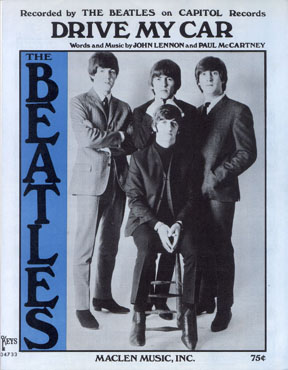 This idiosyncrasy appears as a result of Paul's overdubbed lead guitar line placed on top of the bass guitar introduction and drum fill as played on the rhythm track. The first element of the rhythm track that we hear in the song is Paul’s four bass notes (A, C, D, D) which are played as eighth notes that end just prior to the downbeat of the second measure of the intro. Then Ringo comes in with an introductory drum fill, which consists of sixteenth beats, this segueing perfectly into the first measure of the first verse. On top of this, Paul adds an overdubbed lead guitar passage that actually starts on the eighth note before the first measure of the introduction. In order to decode it properly, practice counting the second guitar note as the downbeat and it will all work out. This idiosyncrasy appears as a result of Paul's overdubbed lead guitar line placed on top of the bass guitar introduction and drum fill as played on the rhythm track. The first element of the rhythm track that we hear in the song is Paul’s four bass notes (A, C, D, D) which are played as eighth notes that end just prior to the downbeat of the second measure of the intro. Then Ringo comes in with an introductory drum fill, which consists of sixteenth beats, this segueing perfectly into the first measure of the first verse. On top of this, Paul adds an overdubbed lead guitar passage that actually starts on the eighth note before the first measure of the introduction. In order to decode it properly, practice counting the second guitar note as the downbeat and it will all work out.
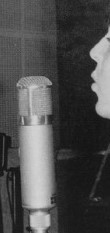 After the listener finally gets his bearings, the first eight-measure verse begins. No rhythm guitar is being strummed anywhere in the song, but its groove is held together by George and Paul playing nearly identical bass lines on their respective instruments while three Ringos hold down the percussion end of the arrangement (drums, tambourine and cowbell). Two part harmony is heard throughout the verse with Paul singing the higher harmony which is basically staying on a single note for the entire verse. John sings the lower harmony with its dissonant F-natural in the seventh and eighth measures that gives the song that uniquely alarming flair (on the words “you can do something in-between”). Also during these measures, the drums interrupt their usual 4/4 rock beat to perform a syncopated pattern alternating between the snare and bass drum while the tambourine and cowbell cut out for the time being. After the listener finally gets his bearings, the first eight-measure verse begins. No rhythm guitar is being strummed anywhere in the song, but its groove is held together by George and Paul playing nearly identical bass lines on their respective instruments while three Ringos hold down the percussion end of the arrangement (drums, tambourine and cowbell). Two part harmony is heard throughout the verse with Paul singing the higher harmony which is basically staying on a single note for the entire verse. John sings the lower harmony with its dissonant F-natural in the seventh and eighth measures that gives the song that uniquely alarming flair (on the words “you can do something in-between”). Also during these measures, the drums interrupt their usual 4/4 rock beat to perform a syncopated pattern alternating between the snare and bass drum while the tambourine and cowbell cut out for the time being.
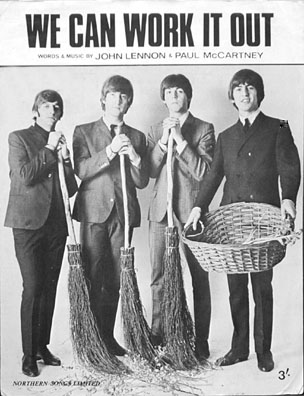 The chorus, which is also eight measures in length, then begins with the entrance of Paul’s piano being the most notable additional element. The piano plays the part of a rhythm instrument in the absence of the usual strummed guitar as in nearly every other Beatles song up to this point. Uniquely, the piano plays a slow triplet pattern in the second and fourth measures as a nice contrast against the uniform 4/4 rhythm that continues underneath it. (The group decides to reprise the use of triplets, per George Harrison’s suggestion, on “We Can Work It Out” which began recording a week later.) The chorus, which is also eight measures in length, then begins with the entrance of Paul’s piano being the most notable additional element. The piano plays the part of a rhythm instrument in the absence of the usual strummed guitar as in nearly every other Beatles song up to this point. Uniquely, the piano plays a slow triplet pattern in the second and fourth measures as a nice contrast against the uniform 4/4 rhythm that continues underneath it. (The group decides to reprise the use of triplets, per George Harrison’s suggestion, on “We Can Work It Out” which began recording a week later.)
 While the cowbell and accented tambourine enter the picture again in the chorus, a second tambourine also comes in to shake a steady rock beat with the drums. John and Paul continue to harmonize throughout this section except for the final phrase “and maybe I'll love you” which is sung in unison, Paul on the right channel and John as overdubbed afterward on the left channel. The piano plays its final chord of the chorus on the one-beat of the eighth measure, leaving behind the guitar and bass unison Otis Redding-like riff to fill out the rest of the final measure. While the cowbell and accented tambourine enter the picture again in the chorus, a second tambourine also comes in to shake a steady rock beat with the drums. John and Paul continue to harmonize throughout this section except for the final phrase “and maybe I'll love you” which is sung in unison, Paul on the right channel and John as overdubbed afterward on the left channel. The piano plays its final chord of the chorus on the one-beat of the eighth measure, leaving behind the guitar and bass unison Otis Redding-like riff to fill out the rest of the final measure.
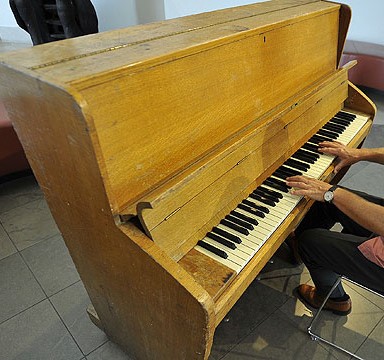 Apart from different lyrics, the second verse is identical in structure and is followed by a repeat of the chorus, which is also structurally the same except for one added element at the end. In the eighth measure, not only does the piano drop out but every other instrument does as well (except for the tambourines). This allows for a three-part harmony (including George) to be heard singing “beep beep mm beep beep, yeah,” which was overdubbed and is heard in both the left and right channels. The major/minor dissonant harmonies are heard once again on these words as are their falsetto vocals which have become a Beatles trademark since 1962. Apart from different lyrics, the second verse is identical in structure and is followed by a repeat of the chorus, which is also structurally the same except for one added element at the end. In the eighth measure, not only does the piano drop out but every other instrument does as well (except for the tambourines). This allows for a three-part harmony (including George) to be heard singing “beep beep mm beep beep, yeah,” which was overdubbed and is heard in both the left and right channels. The major/minor dissonant harmonies are heard once again on these words as are their falsetto vocals which have become a Beatles trademark since 1962.
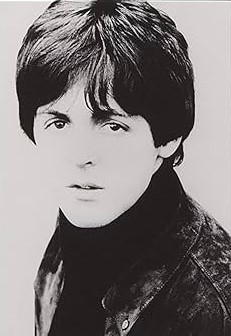 This ushers in the guitar solo, which is played on top of the chord changes of a new verse. As has been becoming more frequent, Paul performs the solo on this track, which is played in part, if not in full, using a slide which is most noticeable in the seventh and eighth measures. The verse instrumentation as heard elsewhere in the song is also present in this guitar solo section of the song. This ushers in the guitar solo, which is played on top of the chord changes of a new verse. As has been becoming more frequent, Paul performs the solo on this track, which is played in part, if not in full, using a slide which is most noticeable in the seventh and eighth measures. The verse instrumentation as heard elsewhere in the song is also present in this guitar solo section of the song.
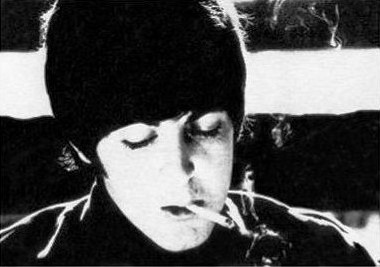 A third chorus is now heard, this one being like the first chorus without the “beep beep” harmonies at the end. Then the third vocal verse appears which contains a new set of lyrics. As is evident in many Lennon / McCartney songs of the first half of The Beatles career, a third verse was optional. “Your inspiration’s gone by that point,” Paul explains. “We would often repeat the first verse…that’s how a lot of our songs end, ‘Repeat 1.’” For “Drive My Car,” however, the inspiration was obviously still high enough to add another element to the story; therefore a new third verse is included. Also, it is here in this verse, in measures two, four and six, that you can hear George’s adlib guitar phrases that were meant to be eliminated when the song was mixed. A third chorus is now heard, this one being like the first chorus without the “beep beep” harmonies at the end. Then the third vocal verse appears which contains a new set of lyrics. As is evident in many Lennon / McCartney songs of the first half of The Beatles career, a third verse was optional. “Your inspiration’s gone by that point,” Paul explains. “We would often repeat the first verse…that’s how a lot of our songs end, ‘Repeat 1.’” For “Drive My Car,” however, the inspiration was obviously still high enough to add another element to the story; therefore a new third verse is included. Also, it is here in this verse, in measures two, four and six, that you can hear George’s adlib guitar phrases that were meant to be eliminated when the song was mixed.
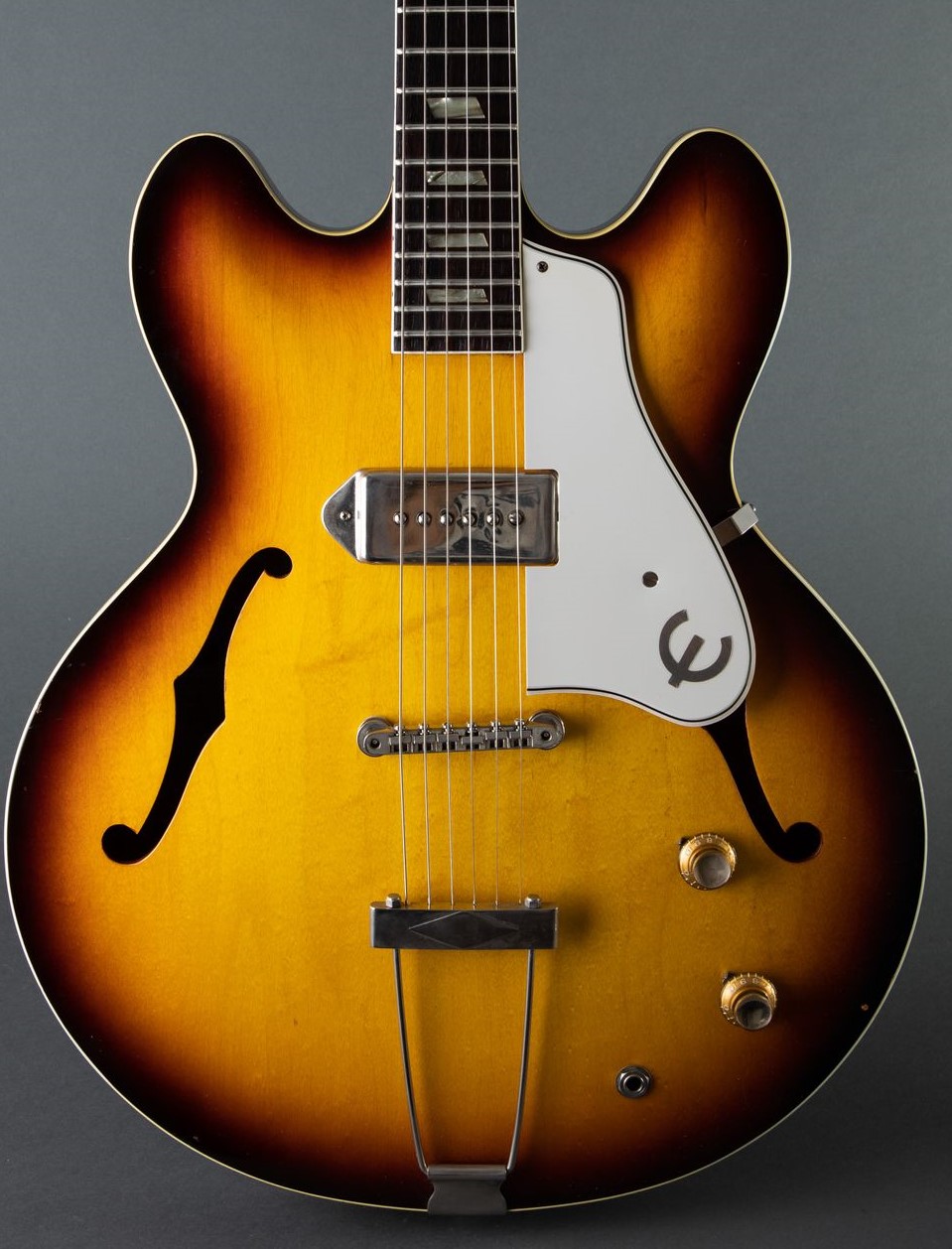 A fourth and final chorus is then heard, which is identical to the second chorus in that it contains the “beep beep” harmonies at the end. The only difference here is that all of the instrumentation disappears for that final measure, even both tambourines. This is then followed by the faded conclusion which repeats the “beep beep” harmonies four more times with complete instrumentation and a reprise of Paul’s slide guitar work in measures five through eight, along with a simple drum fill from Ringo in the fifth measure. All in all, the British “Rubber Soul” album is off to an impressively surprising start. A fourth and final chorus is then heard, which is identical to the second chorus in that it contains the “beep beep” harmonies at the end. The only difference here is that all of the instrumentation disappears for that final measure, even both tambourines. This is then followed by the faded conclusion which repeats the “beep beep” harmonies four more times with complete instrumentation and a reprise of Paul’s slide guitar work in measures five through eight, along with a simple drum fill from Ringo in the fifth measure. All in all, the British “Rubber Soul” album is off to an impressively surprising start.
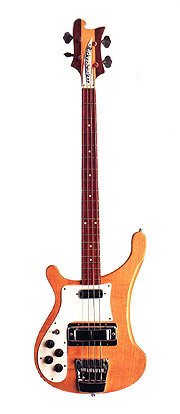 Since this is primarily a "McCartney song," it’s no wonder that he’s the primary performer on the track. His dual lead vocals with John are tightly performed (no doubt under George Martin’s tutelage) as is his excellent R&B style bass playing (under George Harrison’s tutelage). He shows no qualms about playing lead guitar once again and does so expertly. His piano work also appears to have been executed effortlessly but with the appropriate feeling. Since this is primarily a "McCartney song," it’s no wonder that he’s the primary performer on the track. His dual lead vocals with John are tightly performed (no doubt under George Martin’s tutelage) as is his excellent R&B style bass playing (under George Harrison’s tutelage). He shows no qualms about playing lead guitar once again and does so expertly. His piano work also appears to have been executed effortlessly but with the appropriate feeling.
George Harrison is understandably proud of his contribution to the song, introducing the rhythmic feel to be used which he also carried out with much skill. And he also could be counted on for adding that extra harmony when needed and doing so superbly. Ringo was kept quite busy on this track, adding all the needed percussion and all in perfect time, while his drumming on the rhythm track was as vibrant and alive as what we would expect from him. And although John is instrumentally missing from the song, his vocal contributions are an essential ingredient. Since this is primarily Paul’s song, John taking the lower register of the dual lead vocals is quite impressive since he sometimes struggled with this task. As heard here, he puts forward a commanding presentation.
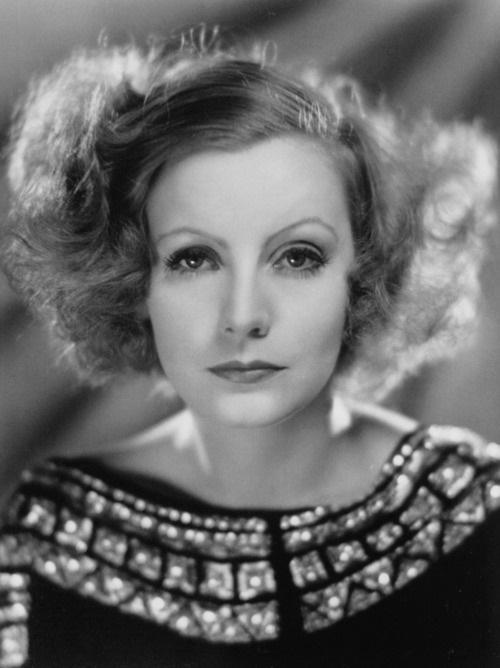 Being viewed by McCartney as a “comedy number,” the lyrics seem to depict a pick-up line used by a man to a woman, asking her “what she wanted to be.” She responds that she wants “to be famous, a star of the screen,” possibly like Greta Garbo, but the singer comically suggested that maybe he could be her chauffer when that time came. Being viewed by McCartney as a “comedy number,” the lyrics seem to depict a pick-up line used by a man to a woman, asking her “what she wanted to be.” She responds that she wants “to be famous, a star of the screen,” possibly like Greta Garbo, but the singer comically suggested that maybe he could be her chauffer when that time came.
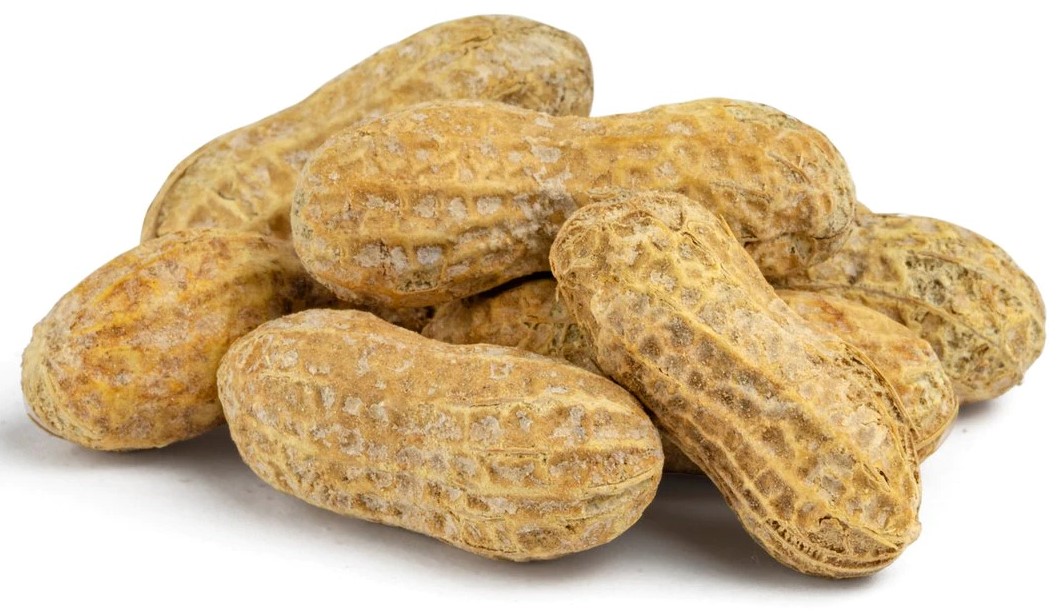 The man then retorted that his “prospects were good,” quite possibly indicating that he has high aspirations for his future as well and wouldn’t stoop to the level of being someone’s driver. She then acknowledges that fact but condescendingly intimates that he’ll only ever amount to “working for peanuts” and that she could show him “a better time” if he drove her car. Playing along, he then says that he’ll “start right away,” but she then puts on the breaks by saying “listen, babe…I got no car” yet. But her flirtatious final line “but I've found a driver and that’s a start” becomes the humorous pay-off line of the song. The man then retorted that his “prospects were good,” quite possibly indicating that he has high aspirations for his future as well and wouldn’t stoop to the level of being someone’s driver. She then acknowledges that fact but condescendingly intimates that he’ll only ever amount to “working for peanuts” and that she could show him “a better time” if he drove her car. Playing along, he then says that he’ll “start right away,” but she then puts on the breaks by saying “listen, babe…I got no car” yet. But her flirtatious final line “but I've found a driver and that’s a start” becomes the humorous pay-off line of the song.
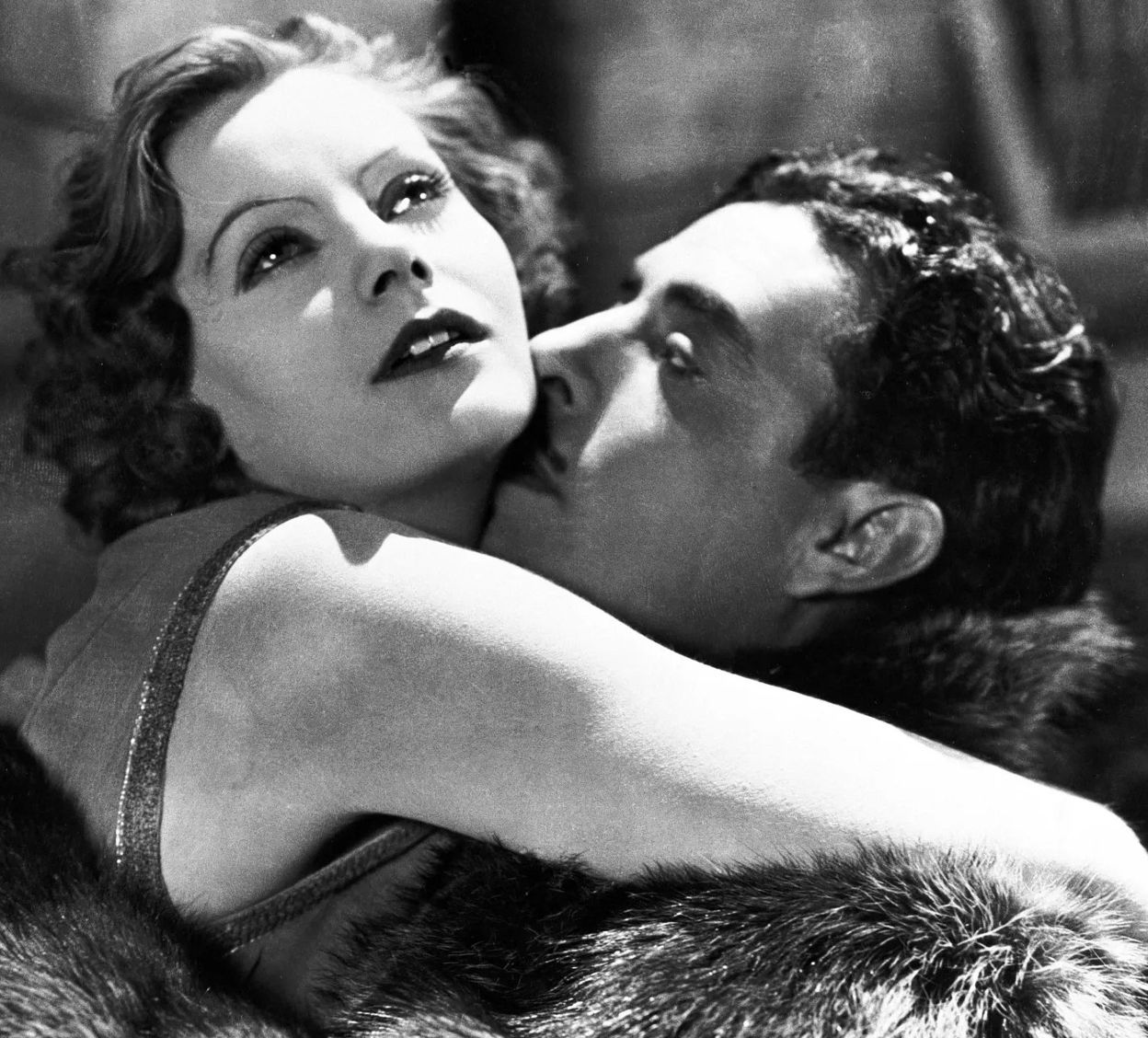 While the phrase “drive my car” is revealed by Paul as a blues euphemism for sex, other lines they thought to include fit the bill as well, such as “I can show you a better time.” “If we could put in something that was a little bit subversive then we would,” Paul explained. While the phrase “drive my car” is revealed by Paul as a blues euphemism for sex, other lines they thought to include fit the bill as well, such as “I can show you a better time.” “If we could put in something that was a little bit subversive then we would,” Paul explained.
American Releases
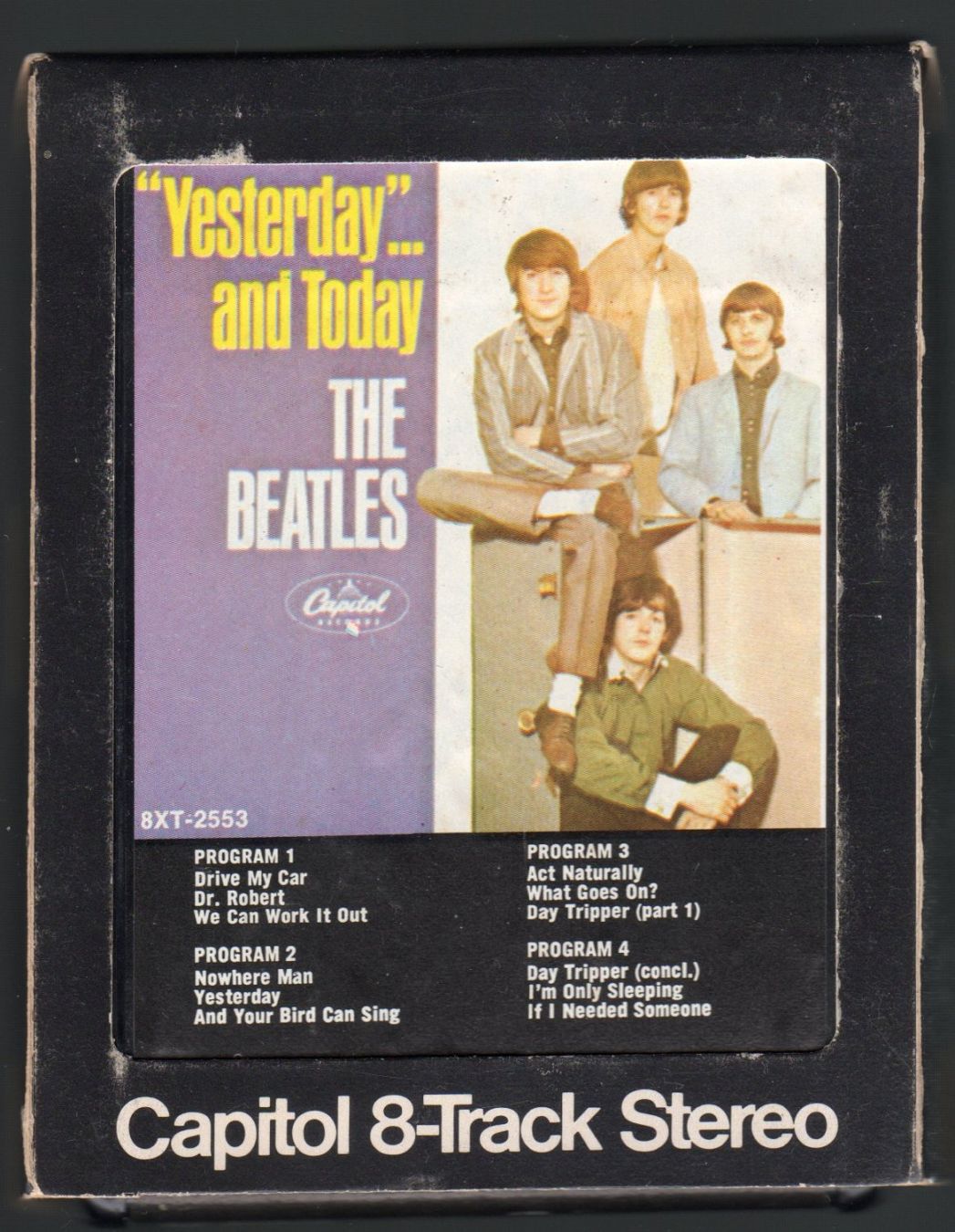 Although Britain was privileged to hear “Drive My Car” in December of 1965 as the stellar opening track on “Rubber Soul,” most of America didn’t know of its existence until June 20th, 1966 when it appeared on Capitol’s make-shift album “Yesterday…And Today.” Whether the American record label wanted to replace the song with “I’ve Just Seen A Face” in order to create a more acoustic / folk sound to the album is not known, although that was the resulting effect. Nonetheless, Capitol knew a good opening number when they heard it, so “Drive My Car” was welcomed as the first impression on this mid-1966 album and it worked very well. "Yesterday...And Today" was then released on January 21st, 2014, as an individual compact disc, both the mono and stereo versions of the album being included on a single CD. Incidentally, this release featured both the "trunk" cover and the "butcher" cover. Although Britain was privileged to hear “Drive My Car” in December of 1965 as the stellar opening track on “Rubber Soul,” most of America didn’t know of its existence until June 20th, 1966 when it appeared on Capitol’s make-shift album “Yesterday…And Today.” Whether the American record label wanted to replace the song with “I’ve Just Seen A Face” in order to create a more acoustic / folk sound to the album is not known, although that was the resulting effect. Nonetheless, Capitol knew a good opening number when they heard it, so “Drive My Car” was welcomed as the first impression on this mid-1966 album and it worked very well. "Yesterday...And Today" was then released on January 21st, 2014, as an individual compact disc, both the mono and stereo versions of the album being included on a single CD. Incidentally, this release featured both the "trunk" cover and the "butcher" cover.
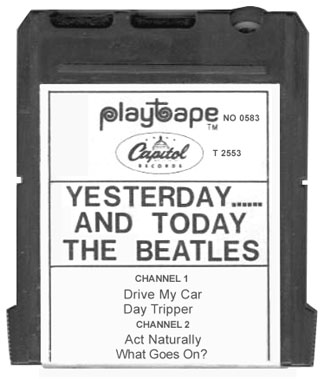 Sometime in 1967, Capitol released Beatles music on a brand new but short-lived format called "Playtapes." These tape cartridges did not have the capability to include entire albums, so two truncated four-song versions of the album "Yesterday...And Today" were released in this portable format, "Drive My Car" being on one of them. These "Playtapes" are highly collectable today. Sometime in 1967, Capitol released Beatles music on a brand new but short-lived format called "Playtapes." These tape cartridges did not have the capability to include entire albums, so two truncated four-song versions of the album "Yesterday...And Today" were released in this portable format, "Drive My Car" being on one of them. These "Playtapes" are highly collectable today.
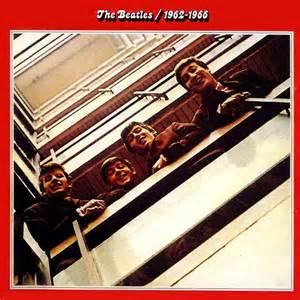 The song was also included in the first ever “greatest hits” package released in the US, namely the double-album compilation “The Beatles/1962-1966” (aka the “Red Album”). This April 2nd, 1973 release featured a total of six “Rubber Soul” songs including this one, although American audiences didn’t recognize it that way, it being known by them as a “Yesterday…And Today” track. The original stereo mix was included on this double album, while the newer 1986 stereo mix made its way onto the 1993 remastered compact disc release as well as the newly remastered version released on October 19th, 2010. The song was also included in the first ever “greatest hits” package released in the US, namely the double-album compilation “The Beatles/1962-1966” (aka the “Red Album”). This April 2nd, 1973 release featured a total of six “Rubber Soul” songs including this one, although American audiences didn’t recognize it that way, it being known by them as a “Yesterday…And Today” track. The original stereo mix was included on this double album, while the newer 1986 stereo mix made its way onto the 1993 remastered compact disc release as well as the newly remastered version released on October 19th, 2010.
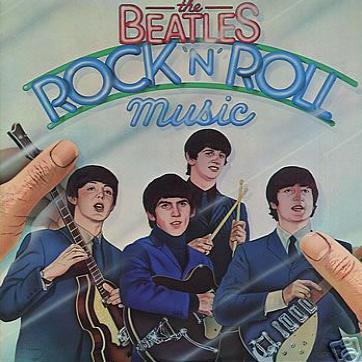 Even though it appeared on the above compilation album, it was also included on their June 7th, 1976 released double-album "Rock 'n' Roll Music." George Martin was consulted regarding the preparation of this album and, with access to only the Capitol mixes, decided it was necessary to alter the right and left channels of the original stereo mix of this song for this album, the right vocal channel being moved mostly to the left and the left instrumental channel being moved mostly to the right. On October 27th, 1980, Capitol re-issued this release as two separate albums, "Rock 'n' Roll Music Volume 2" featuring "Drive My Car" on side one. Even though it appeared on the above compilation album, it was also included on their June 7th, 1976 released double-album "Rock 'n' Roll Music." George Martin was consulted regarding the preparation of this album and, with access to only the Capitol mixes, decided it was necessary to alter the right and left channels of the original stereo mix of this song for this album, the right vocal channel being moved mostly to the left and the left instrumental channel being moved mostly to the right. On October 27th, 1980, Capitol re-issued this release as two separate albums, "Rock 'n' Roll Music Volume 2" featuring "Drive My Car" on side one.
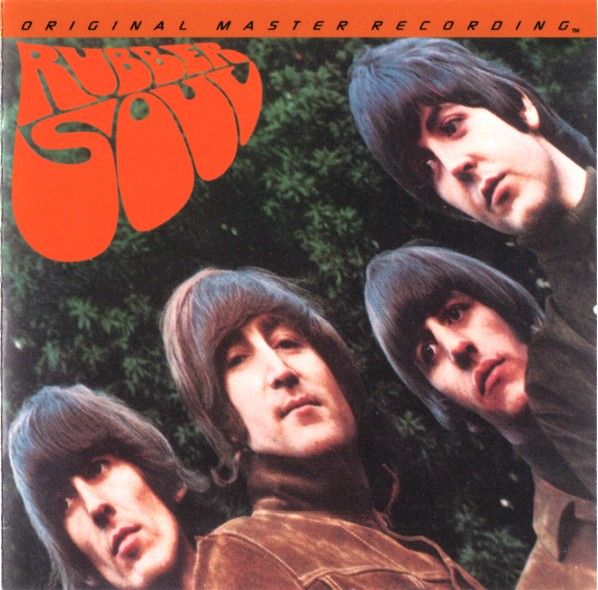 The first time the original British "Rubber Soul” album was made available in America was the "Original Master Recording" vinyl edition released through Mobile Fidelity Sound Lab in June of 1984. This album included the song "Drive My Car" and was prepared utilizing half-speed mastering technology from the original master tape on loan from EMI. This version of the album was only available for a short time and is quite collectible today. The first time the original British "Rubber Soul” album was made available in America was the "Original Master Recording" vinyl edition released through Mobile Fidelity Sound Lab in June of 1984. This album included the song "Drive My Car" and was prepared utilizing half-speed mastering technology from the original master tape on loan from EMI. This version of the album was only available for a short time and is quite collectible today.
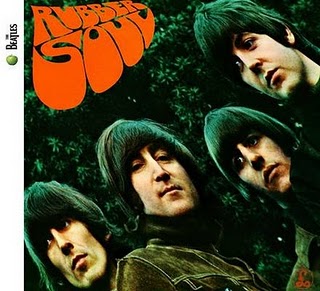 The first appearance of the 1986 stereo mix of “Drive My Car” was on the debut of the British “Rubber Soul” album on compact disc that was released on April 30th, 1987, the vinyl edition coming out on July 21st, 1987. This new mix was also used on the remastered album that was released on CD on September 9th, 2009 and on remastered vinyl on November 13th, 2012. The first appearance of the 1986 stereo mix of “Drive My Car” was on the debut of the British “Rubber Soul” album on compact disc that was released on April 30th, 1987, the vinyl edition coming out on July 21st, 1987. This new mix was also used on the remastered album that was released on CD on September 9th, 2009 and on remastered vinyl on November 13th, 2012.
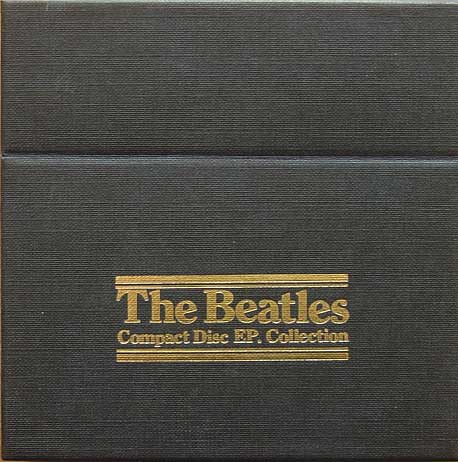 The original 1965 mono mix, with its subdued cowbell and lessened reverb, was first made available in America on the compact disc box set “Compact Disc EP Collection.” This CD set, released on June 30th, 1992, comprised all of the British EPs on individual discs with the original artwork, “Drive My Car” being originally featured on the 1966 released “Nowhere Man” EP. The original 1965 mono mix, with its subdued cowbell and lessened reverb, was first made available in America on the compact disc box set “Compact Disc EP Collection.” This CD set, released on June 30th, 1992, comprised all of the British EPs on individual discs with the original artwork, “Drive My Car” being originally featured on the 1966 released “Nowhere Man” EP.
 This mono mix is also included on the CD box set “The Beatles In Mono,” which was released on September 9th, 2009. This set also includes the 1965 stereo mix as heard on the original “Yesterday…And Today” album as a bonus. Also released on September 9th, 2009 to promote the remastered Beatles catalog was the "09.09.09 Sampler," which was given to retailers and radio programmers, "Drive My Car" being featured therein. The vinyl edition of the box set was first released on Setpember 9th, 2014. This mono mix is also included on the CD box set “The Beatles In Mono,” which was released on September 9th, 2009. This set also includes the 1965 stereo mix as heard on the original “Yesterday…And Today” album as a bonus. Also released on September 9th, 2009 to promote the remastered Beatles catalog was the "09.09.09 Sampler," which was given to retailers and radio programmers, "Drive My Car" being featured therein. The vinyl edition of the box set was first released on Setpember 9th, 2014.
In promotion of the 2014 box set "The US Albums," a 25-song sampler CD was manufactured for limited release on January 21st, 2014, this containing the 1986 stereo mix of "Drive My Car."
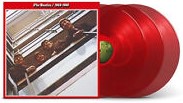 A 50th Anniversay edition of "The Beatles / 1962 - 1966" (aka "The Red Album") was released on November 10th, 2023, the newly created stereo mix of "Drive My Car," as detailed above, being included. This new expanded release included 12 additional songs for a total of 38 tracks, and was made available as a double CD and as a triple vinyl release on both black and red vinyl. A 50th Anniversay edition of "The Beatles / 1962 - 1966" (aka "The Red Album") was released on November 10th, 2023, the newly created stereo mix of "Drive My Car," as detailed above, being included. This new expanded release included 12 additional songs for a total of 38 tracks, and was made available as a double CD and as a triple vinyl release on both black and red vinyl.
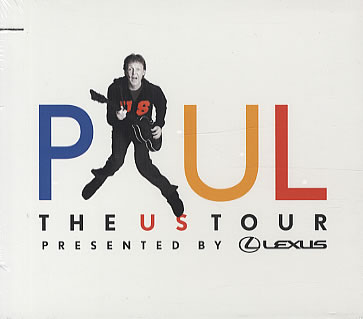 As noted above, live albums from Paul McCartney have included “Drive My Car” as well. The first was “Paul Is Live,” which was released in the US on November 8th, 1993. The second was a 2005 limited edition two disc set entitled “Paul: The US Tour Presented by Lexus,” this release only being made available through Lexus auto dealerships and included his version of the song as performed at the 2005 Super Bowl. The third was “Good Evening New York City,” which came out on November 17th, 2009. The fourth was "Amoeba Gig," which was recording of his full June 27th, 2007 Hollywood, California performance that was eventually released on July 12th, 2019. As noted above, live albums from Paul McCartney have included “Drive My Car” as well. The first was “Paul Is Live,” which was released in the US on November 8th, 1993. The second was a 2005 limited edition two disc set entitled “Paul: The US Tour Presented by Lexus,” this release only being made available through Lexus auto dealerships and included his version of the song as performed at the 2005 Super Bowl. The third was “Good Evening New York City,” which came out on November 17th, 2009. The fourth was "Amoeba Gig," which was recording of his full June 27th, 2007 Hollywood, California performance that was eventually released on July 12th, 2019.
Live Performances
Unfortunately, there weren’t any, although you can check out “Beatles Rock Band” to see an animated simulation of them performing “Drive My Car” in Japan in 1966. Ah, what would have been!
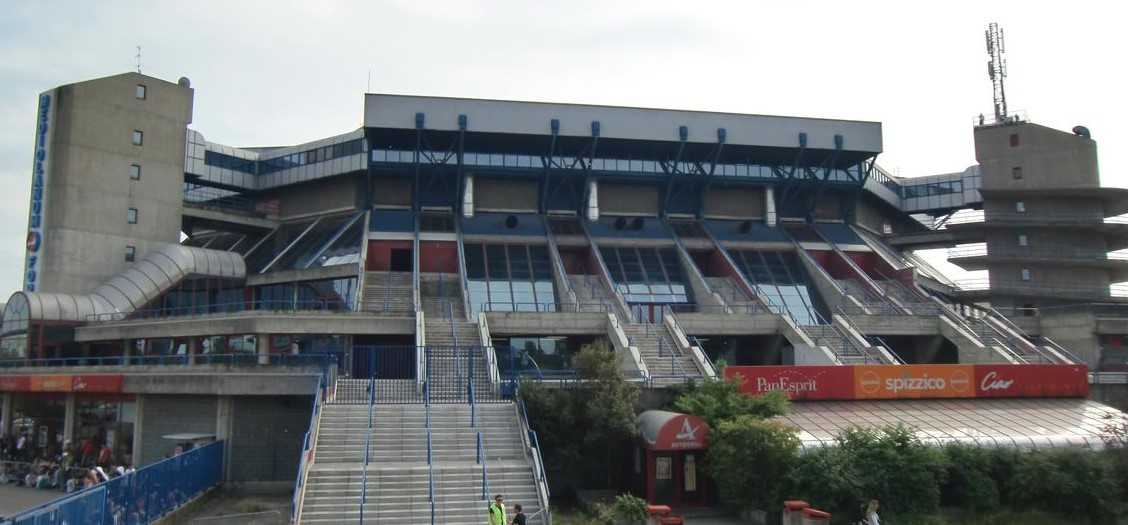 It was only natural for Paul to include the song in his solo performances and that is just what he did. This began with his 1993 “New World Tour,” including "Drive My Car" in all seven legs of this tour, which spanned from February 18th (at the Forum di Assago in Milan, Italy) to December 16th of that year. Then came his “2004 Summer Tour” that went from May 25th to June 26th, encompassing fourteen shows. “The US Tour” of 2005 also included the song, the tour lasting 37 dates from September 17th to November 30th of that year. He also performed the song during his June 27th, 2007 show at Amoeba Music in Hollywood, California, which was eventually released in 2019, as mentioned above. His “Summer Live ‘09” tour spanned ten shows from July 11th to August 19th. His brief “Good Evening Europe” tour contained the song as well, only eight dates between December 2nd and 22nd being included. It was only natural for Paul to include the song in his solo performances and that is just what he did. This began with his 1993 “New World Tour,” including "Drive My Car" in all seven legs of this tour, which spanned from February 18th (at the Forum di Assago in Milan, Italy) to December 16th of that year. Then came his “2004 Summer Tour” that went from May 25th to June 26th, encompassing fourteen shows. “The US Tour” of 2005 also included the song, the tour lasting 37 dates from September 17th to November 30th of that year. He also performed the song during his June 27th, 2007 show at Amoeba Music in Hollywood, California, which was eventually released in 2019, as mentioned above. His “Summer Live ‘09” tour spanned ten shows from July 11th to August 19th. His brief “Good Evening Europe” tour contained the song as well, only eight dates between December 2nd and 22nd being included.
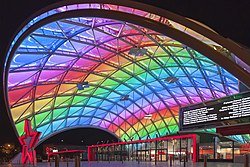 He also sometimes included “Drive My Car” during his extensive “Up And Coming Tour” of 2010, which spanned thirty shows from March 28th to November 22nd. His "On The Run" tour sporadically included the song as well, this tour beginning on July 15th, 2011 and concluding on November 29th, 2012. Paul periodically included the song in his set lists for the "One On One" tour, which ran from April 13th, 2016 to December 16th, 2017, as well as during the 2023/2024 legs of his "Got Back" tour, which ran from October 18th, 2023 (at the Adelaide Entertainment Centre in Adelaide, Australia) to December 19th, 2024. He also sometimes included “Drive My Car” during his extensive “Up And Coming Tour” of 2010, which spanned thirty shows from March 28th to November 22nd. His "On The Run" tour sporadically included the song as well, this tour beginning on July 15th, 2011 and concluding on November 29th, 2012. Paul periodically included the song in his set lists for the "One On One" tour, which ran from April 13th, 2016 to December 16th, 2017, as well as during the 2023/2024 legs of his "Got Back" tour, which ran from October 18th, 2023 (at the Adelaide Entertainment Centre in Adelaide, Australia) to December 19th, 2024.
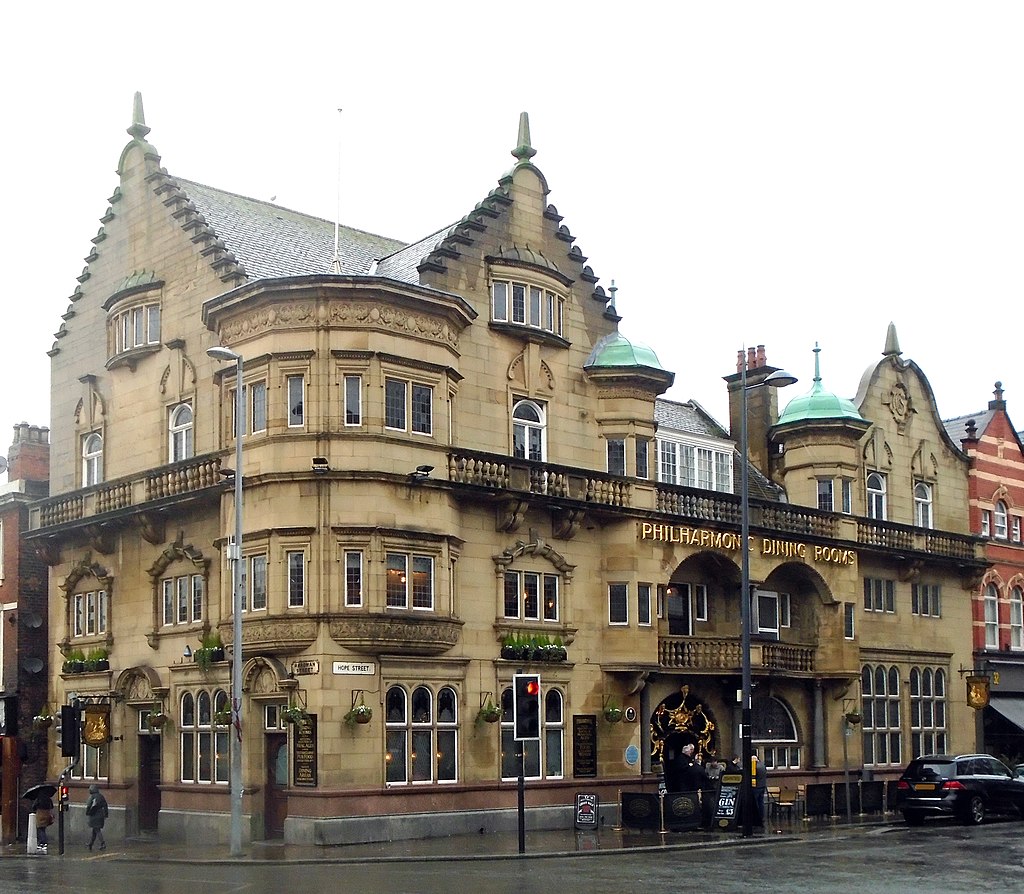 We also need to mention Paul's incredible performance of the song as the half-time act at “Super Bowl XXXIX” on February 6th, 2005. Once again choosing to open his brief set with the song, this was performed without any “wardrobe malfunction” as had occurred the previous year. We also need to mention Paul's incredible performance of the song as the half-time act at “Super Bowl XXXIX” on February 6th, 2005. Once again choosing to open his brief set with the song, this was performed without any “wardrobe malfunction” as had occurred the previous year.
McCartney also performed the song at the Philharmonic Pub in Liverpool on June 9th, 2018 as part of a segment for "The Late Late Show with James Corden." This first aired on CBS television on June 21st and then as a prime-time special on August 20th of that year.
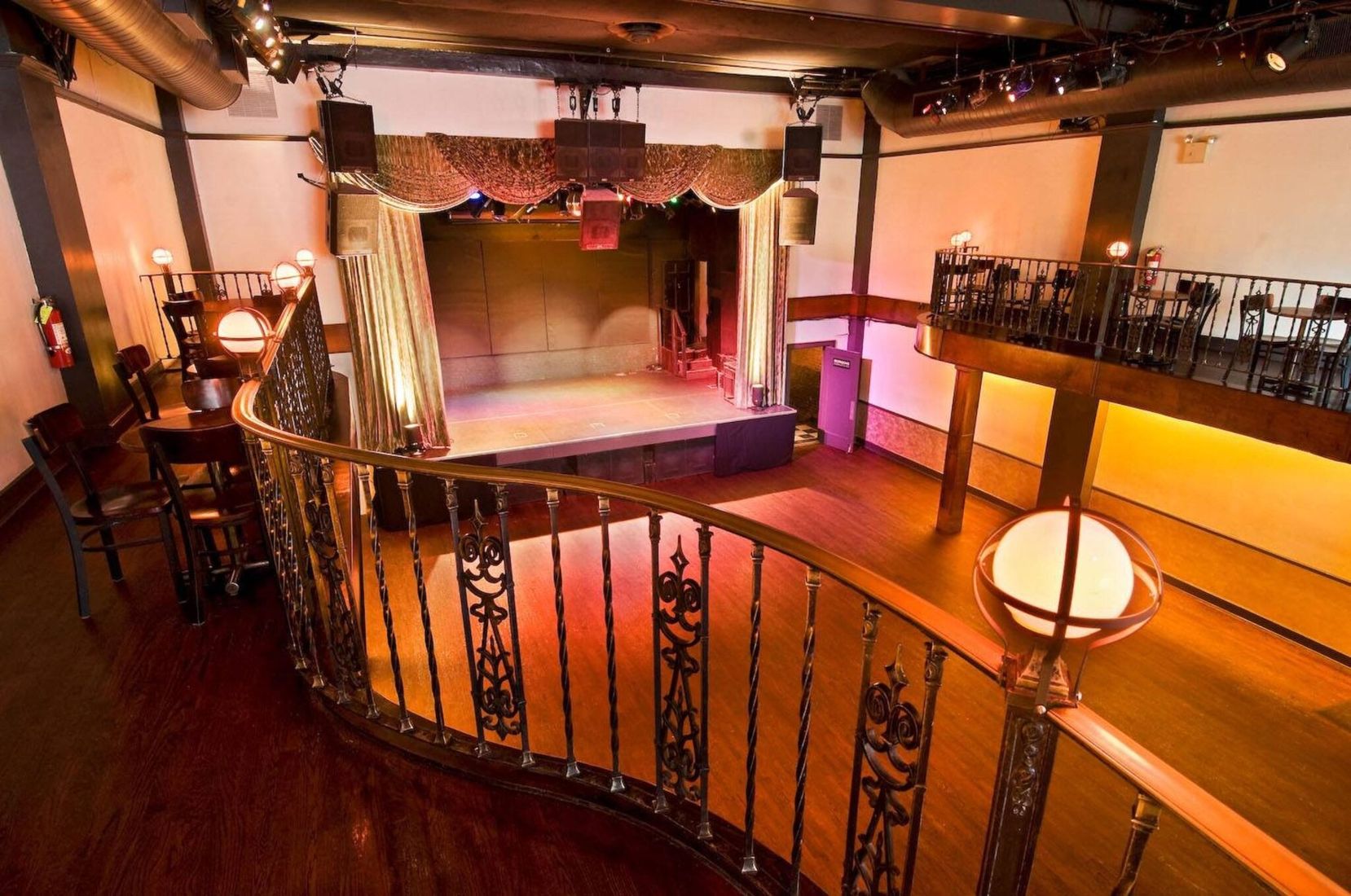 Interestingly, Paul and his group played a surprise three night residency at the Bowery Ballroom in New York City on February 11th, 12th and 14th, 2025, this final night being Valentine's Day. The group played "Drive My Car" at each of these performances at this quaint 575-capacity venue in Manhattan. Interestingly, Paul and his group played a surprise three night residency at the Bowery Ballroom in New York City on February 11th, 12th and 14th, 2025, this final night being Valentine's Day. The group played "Drive My Car" at each of these performances at this quaint 575-capacity venue in Manhattan.
Conclusion
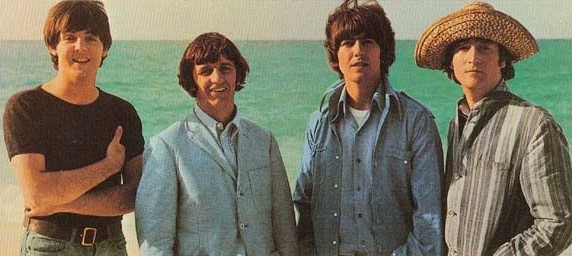 Fortunately for us, The Beatles were always anxious to venture into a new direction with their musicianship and songwriting. While most today may view “Drive My Car” as just another playful mid-career pop song by the band, it actually appears to be much more when viewed within its context. By 1965, they were acknowledging the stagnant state of the pop music industry as a whole and didn’t want to just keep pumping out the same old stuff endlessly. They wanted to grow. Fortunately for us, The Beatles were always anxious to venture into a new direction with their musicianship and songwriting. While most today may view “Drive My Car” as just another playful mid-career pop song by the band, it actually appears to be much more when viewed within its context. By 1965, they were acknowledging the stagnant state of the pop music industry as a whole and didn’t want to just keep pumping out the same old stuff endlessly. They wanted to grow.
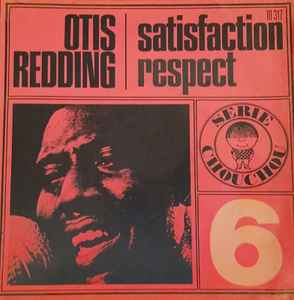 One direction in which they wanted to grow was toward the music they loved. When asked in August of 1965 what they liked best about America, Paul answered “The music. American music…It’s better, I think, you know. The American colored groups and things.” With this in mind, attempting to imitate a recent Otis Redding single was a natural choice for a broadened horizon. Infusing a comedic slant to the lyrics was another jump into unknown territory. One direction in which they wanted to grow was toward the music they loved. When asked in August of 1965 what they liked best about America, Paul answered “The music. American music…It’s better, I think, you know. The American colored groups and things.” With this in mind, attempting to imitate a recent Otis Redding single was a natural choice for a broadened horizon. Infusing a comedic slant to the lyrics was another jump into unknown territory.
As time progressed, there appeared to be no territory that The Beatles weren’t willing to jump into. With “Drive My Car” opening the new Beatles album at that time, we all were beginning to expect these jumps…as well as welcoming them.
Song Summary
“Drive My Car”
Written by: John Lennon / Paul McCartney
-
Song Written: September/October, 1965
-
Song Recorded: October 13, 1965
-
First US Release Date: June 20, 1966
-
-
US Single Release: n/a
-
Highest Chart Position: n/a
-
British Album Release: Parlophone #PCS 3075 “Rubber Soul”
-
Length: 2:25
-
Key: D major
-
Producer: George Martin
-
Engineers: Norman Smith, Ken Scott
Instrumentation (most likely):
-
Paul McCartney - Lead and Harmony Vocals, Bass Guitar (1964 Rickenbacker 4001S), Lead Guitar (1962 Epiphone Casino ES-230TD), Piano (1964 Challen upright 861834)
-
George Harrison – Rhythm Guitar (1961 Sonic Blue Fender Stratocaster), Harmony Vocals
-
John Lennon - Lead and Harmony Vocals
-
Ringo Starr – Drums (1965 Ludwig Super Classic Black Oyster Pearl), tambourine, cowbell
Written and compiled by Dave Rybaczewski
11 Facts About Driving Under the Influence
|
IF YOU WOULD LIKE TO MAKE A DONATION TO KEEP THIS WEBSITE UP AND RUNNING, PLEASE CLICK BELOW!
Sign Up Below for our MONTHLY BEATLES TRIVIA QUIZ!
|